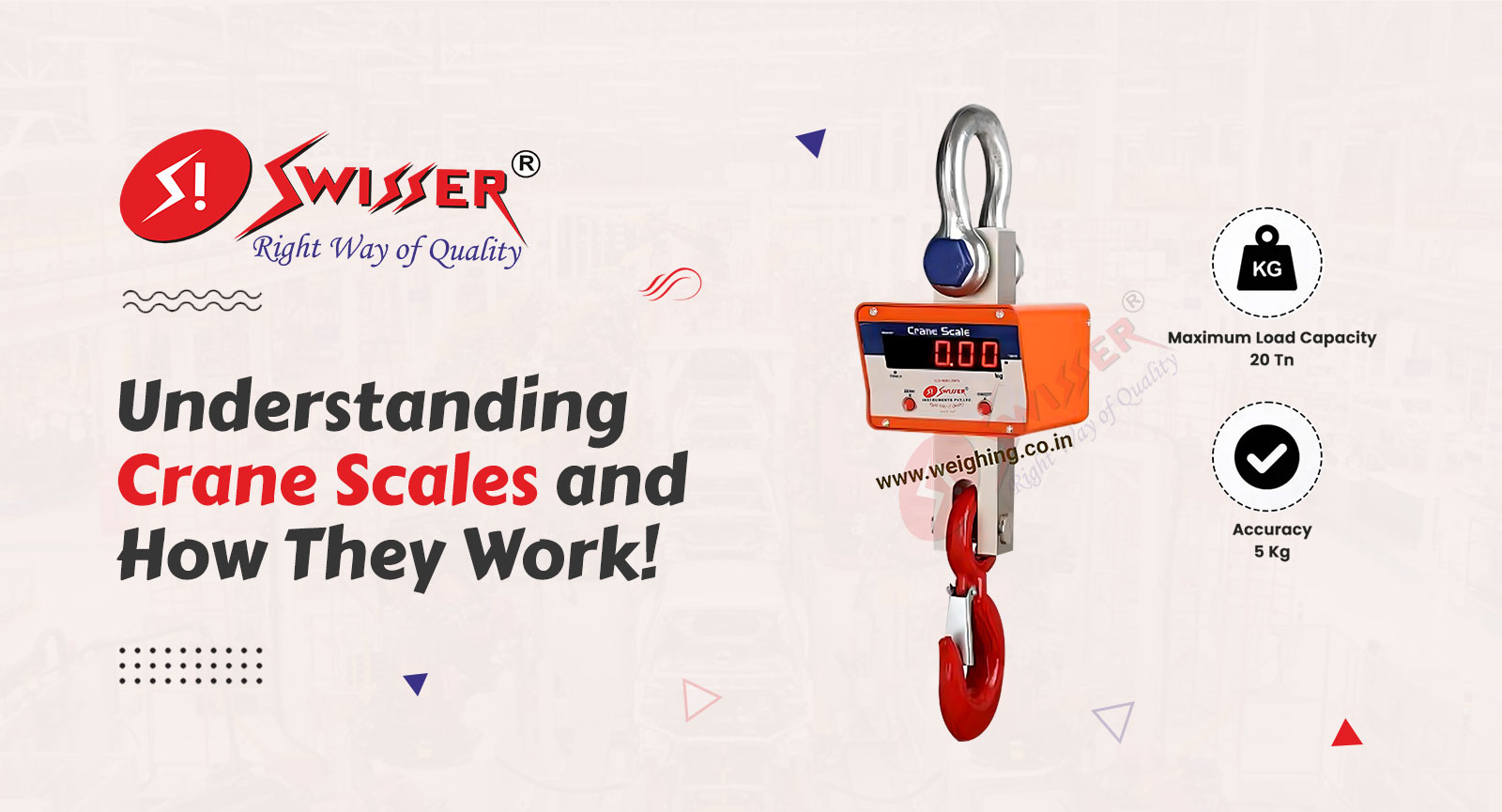When it comes to weighing large or heavy weights, standard weighing scales might not work. These scales must be bigger and able to carry huge weights to offer accurate measurements. This presents various challenges, particularly in shipping & transportation, aviation, building, industrial, and mining applications.
This is where a heavy-duty crane scale comes into play. These scales are meant to be mounted on cranes, hoists, and overhead beams. This blog shares complete details about crane weighing scales.
What is a Crane Scale?
Crane scales, also known as hanging scales, are commonly used in commercial or industrial settings to weigh enormous weights. These scales are mounted to cranes or hoist hooks. When you hang the weight on the scale, it exerts force on the load cells. And, the load cell converts the force into an electrical signal that is shown on a digital readout. These weighing scales, unlike standard scales, can weigh things hung in the air
The following are some of the primary features and advantages of crane scales:
- These scales provide accuracy, even when handling items weighing several thousand kilograms.
- Crane scales have a large capacity of up to 50 tons.
- They are composed of heavy-duty steel and aluminum to provide superior protection and durability.
- Some versions have wireless technology to monitor and gather weight data remotely.
How Do Crane Scales Work?
Below is a basic summary of the key components of a crane weighing scale and how they operate.
First, know about the key components:
Load Cell
Load cells are made up of strain gauges and have bodies made of stainless steel, alloy steel, or aluminum. These cells detect deformation in the strain gauges induced by the force of the load and transform it into electrical signals.
Hook
This is a very durable crane scale component that allows huge loads to be safely hung.
Display
Depending on the model, the display might be digital or analog. It provides a real-time readout of the weight of the item.
Housing
This is the cover for the crane weighing scale’s load cells and other internal components. The function of the housing is to protect the scale’s internal components from dust, moisture, and physical damage caused by collisions.
Crane Scale Operating Principle
Most crane weighing scales run on batteries. Start by connecting the scale’s hook to the digital readout. After that, tare the scale to ensure that the weight of the hook is removed from the final reading.
When you attach the hook to the unknown weight, it applies force to the load cell. The load cell monitors the force and transforms it into an electrical signal. This signal is handled first before being delivered to the display. This allows you to discover the exact weight of things weighing many tons.
Conclusion
Crane scales are a wise investment for industries. With these scales, it is possible to handle very heavy loads for a diverse range of applications. When buying a crane weighing scale, it is better to consider the customer reviews, its weight capacity, durability, and your intended industrial application. This can help you find a scale that not only meets your needs but also ensures long-term cost savings.
You can visit
Swisser Instruments today to buy high-quality crane weighing scales for all industrial applications at very reasonable prices.

